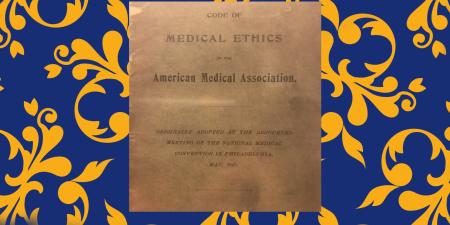Abstract
Teaching and learning patient advocacy in academic health centers requires critical engagement with social, political, and cultural conceptions of racial difference. This article considers understandings of race and racism typically drawn upon in health care and suggests which historical and social science-based approaches should be used in health professions teaching and learning.
Navigating Complex Terrain
Racial categories, often derived from US census categories, have been used in studies of risk factors for illness and disease as well as in diagnostic and clinical algorithms that adjust for the imputed race of a health care seeker.1,2,3 Discussion of these uses of race or ethnicity as “markers of an intrinsic health difference between human populations”4 has produced widespread debate over how to reckon with ongoing systemic inequalities that contribute to racial inequalities in health and the use of race as a proxy for genetic differences in supposedly hereditable traits.5 Responding to lingering perceptions that racial categories constitute a biologically salient and observable basis of difference, Dorothy Roberts argues in her book, Fatal Invention: How Science, Politics, and Big Business Re-Create Race in the Twenty-First Century, that an assumed biological basis of race was preceded by the employment of racial difference for the purposes of political and social classification, exploitation, and separation.6 Indeed, scientific racism or biological explanations of racial difference and ordering developed in tandem with European colonial expansion and the trans-Atlantic slave trade. While it was established decades ago that race has no underlying biological basis,7 the biological effects of racism on health are easily demonstrable in health disparities and disparities in care due to clinician bias, to name 2 examples. Importantly, the ongoing effects of the use of race in medicine are the subject of contemporary debates in medical education.
Race in Health Care
While the hereditary basis of racially and ethnically associated disease categories, such as sickle cell disease and Tay-Sachs disease, are well known, race-based thinking in medicine exists across many different areas of practice and training. In 2021, the American College of Obstetricians and Gynecologists shifted its stance about using race as risk factor in the vaginal birth after cesarian calculator8 after articles critiquing the use of race as a risk factor in birthing decisions were published.4,9,10 Yet, at the same time, efforts to develop global respiratory reference values through the Global Lung Function Initiative have increased the use of reference equations for pulmonary function based on 3 ethnic referents: Caucasian, North and South East Asian, and African American.11 This push to increasingly standardize the use of racialized pulmonology practice—even under the altered term of “ethnicity”—has led to attempts both to generalize racial/ethnic categories for populations of African descent12 and to limit such efforts, given differences in environmental and social dynamics and genetic heritage.13 These challenges have led to calls to greatly expand the collection of spirometry data to include far more ethnic categories,14 even as other research has found “no evidence that race/ethnicity-based spirometry reference equations improved the prediction of clinical events.”15 To parse and understand the complex relationships between health, organ function, and structural forms of harm stemming from legacies of racial oppression, migration, and marginalization is a difficult, ongoing, and complex process about which scientific literature is still developing. While effective arguments have been made to move beyond race-based medicine in the United States,16 understanding how to do so within medical curricula is a more complicated task.
Centering Students
For students, learning information about the ways that race and racial categories are or are not clinically relevant presents many challenges. On the first week of medical school, students might be told that race is not a biological category, only to see it used as such in practice in pathophysiology classes in the second year and then in daily work on nearly all of their clinical rotations. Students receive seemingly contradictory information, as one block in their curriculum might emphasize the necessity of race correction or the employment of race, while another might wholly refute the practice. Students might understandably be confused as to why race is pertinent in one case and not in another. Furthermore, when being taught “racial” risk factors for diseases such as lupus erythematosus or diabetes mellitus, students might be given opportunity to discuss differences in risk factors being due to ongoing effects of disenfranchisement, segregation, and unequal access to goods and services that correlate with the lived experiences of structural racism—or they might simply infer that differences in risk are innate. For educators, understanding the need to distinguish between socially produced and shifting racial categories and hereditary genetic indicators, disabusing students of assumptions related to racial difference and pain, and developing a core competency on these topics are all of great significance clinically and from an educational perspective.
On the first week of medical school, students might be told that race is not a biological category, only to see it used as such in practice in pathophysiology classes in the second year and then in daily work on nearly all of their clinical rotations.
A 2016 survey of medical students’ perceptions of pain attests that many believe there are racial differences in pain tolerance or even that differently racialized bodies have thicker skin or skin less sensitive to pain sensation.17 For students who likely arrive at medical school with significant training in the natural sciences but perhaps less grounding in historical and social scientific understanding of the social determinants of health, understanding histories of medical racism and broader forms of discrimination becomes a significant challenge that will eventually affect patient care and patient outcomes. For example, Eneanya et al have demonstrated the potentially hazardous effects of race corrections in kidney function tests and their effects on time to dialysis and transplants.18 Yet students now increasingly enter medical school with a greater awareness of these topics than their educators, given the Medical College Admission Test’s addition of content on psychological and sociological bases of behavior in 2015.19 For instance, students might be comfortable discussing the intricacies of the social determinants of health as they relate to racism and its effects but be deeply confused about how to disentangle genetic from social risk factors. It is also worth pointing out that, as the student body of medical schools in the United States now includes more students from minoritized groups underrepresented in science and medicine, the friction between de jure and de facto race thinking in the medical classroom can have different stakes for present-day medical student bodies than it did for prior generations.
New Directions
A key aim of structural competency is the development of “an extraclinical language of the structural elements beyond clinical symptoms, signs, and pathophysiology of disease.”20 While training in both cultural and structural competency is now much more common across medical education and helps students understand how cultural backgrounds and structural inequalities might affect a health care seeker’s medical decisions, health care-seeking practices, or self-presentation to a physician, it is largely silent on the role of medicine in the production of racist knowledge. Training in structural competency thus should also include studying histories of medical violence21,22 and how ideologies of racial difference that affect health care too often are unaddressed in clinical training.
At Johns Hopkins, we have sought to build targeted interventions into the curriculum on structural competency that aim to undergird what a truly effective physician needs to know in order to navigate powerful social structures and respond to legacies of racism and ongoing racial inequalities and racism in medicine. Developing critical interventions at various points within the medical curriculum has proven effective in facilitating students’ consideration of these topics and issues.
By incorporating curricular materials from the history, sociology, and anthropology of medicine, the training at Johns Hopkins seeks to shed light not only on the history of race-based thinking in medicine and how it affects contemporary processes, but also on how to disentangle the inequities produced by racism from biologically deterministic views of race. For instance, lectures aimed at considering racism as a fundamental cause of health inequalities and the assumptions underlying race-specific pharmaceuticals like the heart failure medication isosorbide dinitrate/hydralazine can be a useful pedagogical tool for examining histories of segregation and unequal care and their attendant health effects, as well as for considering and questioning how racial essentialism becomes a proxy for social determinants of health. Similarly, while lectures on renal pathophysiology will necessarily focus on the function of kidneys and nephrology, guest lectures, required for students, can also be an opportunity to consider work by historians, sociologists, and other specialists in the social sciences and critical medical humanities who have explored the legacies of treating organs and organ function as indicators of racial inferiority.23,24 Such interventions can be critical to students’ and future clinicians’ engagement with competencies needed to navigate challenging and contradictory clinical recommendations and to care well for patients.
References
- Vyas DA, Eisenstein LG, Jones DS. Hidden in plain sight—reconsidering the use of race correction in clinical algorithms. N Engl J Med. 2020;383(9):874-882.
- Obermeyer Z, Powers B, Vogeli C, Mullainathan S. Dissecting racial bias in an algorithm used to manage the health of populations. Science. 2019;366(6464):447-453.
-
Braun L, Fausto-Sterling A, Fullwiley D, et al. Racial categories in medical practice: how useful are they? PLoS Med. 2007;4(9):e271.
- Rubashkin N. Why equitable access to vaginal birth requires abolition of race-based medicine. AMA J Ethics. 2022;24(3):E233-E238.
-
Fullwiley D. The Enculturated Gene: Sickle Cell Health Politics and Biological Difference in West Africa. Princeton University Press; 2011.
-
Roberts D. Fatal Invention: How Science, Politics, and Big Business Re-Create Race in the Twenty-First Century. New Press; 2012.
-
Shen H, Feldman MW. Diversity and its causes: Lewontin on racism, biological determinism and the adaptationist programme. Philos Trans R Soc B Biol Sci. 2022;377(1852):20200417.
-
Practice Advisory. Counseling regarding approach to delivery after cesarean and the use of a vaginal birth after cesarean calculator. American College of Obstetricians and Gynecologists. December 2021. Accessed March 3, 2023. https://www.acog.org/en/clinical/clinical-guidance/practice-advisory/articles/2021/12/counseling-regarding-approach-to-delivery-after-cesarean-and-the-use-of-a-vaginal-birth-after-cesarean-calculator
-
Grobman WA, Sandoval G, Rice MM, et al; Eunice Kennedy Shriver National Institute of Child Health and Human Development Maternal-Fetal Medicine Units Network. Prediction of vaginal birth after cesarean delivery in term gestations: a calculator without race and ethnicity. Am J Obstet Gynecol. 2021;225(6):664.e1-664.e7.
- Vyas DA, Jones DS, Meadows AR, Diouf K, Nour NM, Schantz-Dunn J. Challenging the use of race in the vaginal birth after cesarean section calculator. Womens Health Issues. 2019;29(3):201-204.
- Cooper BG, Stocks J, Hall GL, et al. The Global Lung Function Initiative (GLI) Network: bringing the world’s respiratory reference values together. Breathe (Sheff). 2017;13(3):e56-e64.
-
Madanhire T, Ferrand RA, Attia EF, Sibanda EN, Rusakaniko S, Rehman AM. Validation of the global lung initiative 2012 multi-ethnic spirometric reference equations in healthy urban Zimbabwean 7-13 year-old school children: a cross-sectional observational study. BMC Pulm Med. 2020;20(1):56.
- Smith SJ, Gray DM, MacGinty RP, et al. Choosing the better Global Lung Initiative 2012 Equation in South African population groups. Am J Respir Crit Care Med. 2020;202(12):1724-1727.
- Masekela R, Hall GL, Stanojevic S, et al. An urgent need for African spirometry reference equations: the Paediatric and Adult African Spirometry Study. Int J Tuberc Lung Dis. 2019;23(8):952-958.
- Elmaleh-Sachs A, Balte P, Oelsner EC, et al. Race/ethnicity, spirometry reference equations, and prediction of incident clinical events: the Multi-Ethnic Study of Atherosclerosis (MESA) lung study. Am J Respir Crit Care Med. 2022;205(6):700-710.
- Jones DS. Moving beyond race-based medicine. Ann Intern Med. 2021;174(12):1745-1746.
- Hoffman KM, Trawalter S, Axt JR, Oliver MN. Racial bias in pain assessment and treatment recommendations, and false beliefs about biological differences between blacks and whites. Proc Natl Acad Sci U S A. 2016;113(16):4296-4301.
- Eneanya ND, Yang W, Reese PP. Reconsidering the consequences of using race to estimate kidney function. JAMA. 2019;322(2):113-114.
-
Grimmett Z. MCAT prep: 5 reasons psychology and sociology courses can help. US News & World Report. March 14, 2023. Accessed August 29, 2023. https://www.usnews.com/education/articles/mcat-prep-reasons-psychology-and-sociology-courses-can-help
-
Wang EE. Structural competency: what is it, why do we need it, and what does the structurally competent emergency physician look like? AEM Educ Train. 2020;4(suppl 1):S140-S142.
-
Owens DC. Medical Bondage: Race, Gender, and the Origins of American Gynecology. University of Georgia Press; 2018.
- Owens DC, Fett SM. Black maternal and infant health: historical legacies of slavery. Am J Public Health. 2019;109(10):1342-1345.
-
Braun L. Breathing Race Into the Machine: The Surprising Career of the Spirometer From Plantation to Genetics. University of Minnesota Press; 2014.
-
Hogarth RA. Medicalizing Blackness: Making Racial Difference in the Atlantic World, 1780-1840. University of North Carolina Press; 2017.



